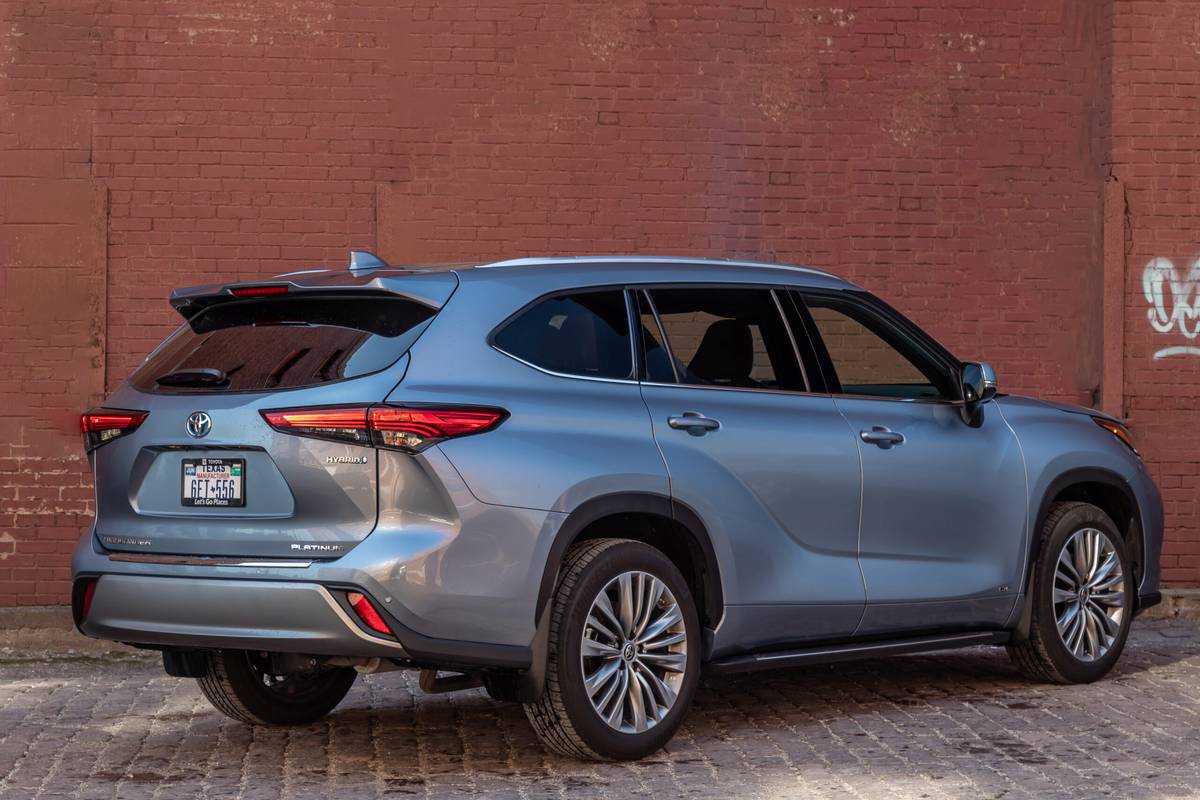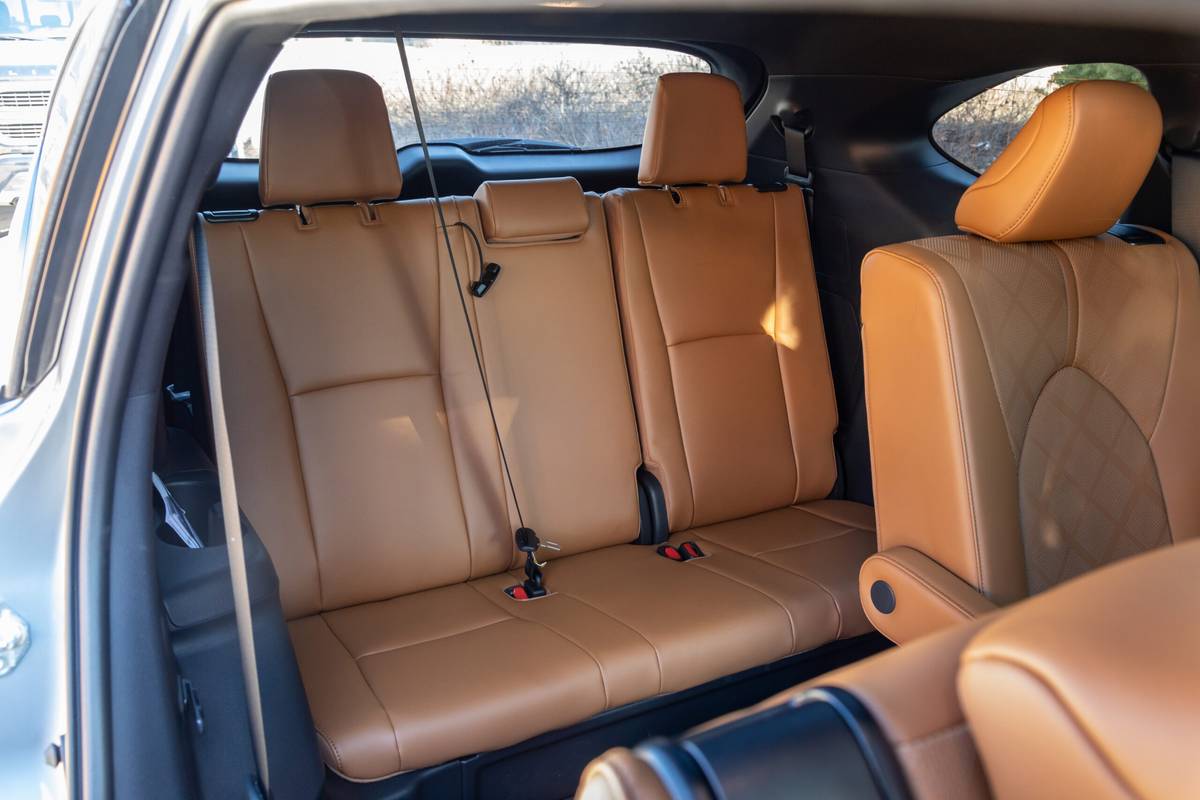Is the 2023 Toyota Highlander Hybrid a Good SUV? 5 Pros, 3 Cons

When it comes to choosing an all-around practical and sensible family vehicle, few check as many boxes as the Toyota Highlander Hybrid. With three rows of seats, all of the comfort and safety features most families want, and a powertrain that delivers adequate power and impressive fuel economy for its size, the Highlander Hybrid gets a lot of the important stuff right — but that doesn’t mean it’s right for everybody.
Related: 2023 Toyota Highlander Hybrid Review: Long on Efficiency, Short on Space
Last redesigned for 2020, the Highlander got an update for 2023, bringing a revised infotainment system with larger screens in all versions, and a new engine for gasoline models. In a crowded field of mid-size SUVs, it’s notable that the Highlander Hybrid faces only two direct competitors offering both a third row and a hybrid powertrain: the Ford Explorer and Kia Sorento. The Highlander falls between them in both size and price.
While the Highlander Hybrid remains an excellent choice for some buyers, not all is perfect as News Editor Jennifer Geiger found out while putting one to use with her own family. Tap the link above for Geiger’s complete expert review, or read on for a quicker look at the highs and lows of the 2023 Toyota Highlander Hybrid.
Things We Like

1. Good on Gas
The Highlander Hybrid’s powertrain pays dividends at the pump, with front-wheel-drive versions returning an EPA-estimated 36 mpg combined. That drops to 35 mpg with all-wheel drive, which is still impressive for any mid-size SUV and about 10 mpg better than the most fuel-efficient Highlander with a conventional powertrain.
2. Smooth Stopper
As is typical of braking systems in other hybrid vehicles, the Highlander Hybrid uses regenerative braking to help with fuel efficiency. Unlike many of those systems, however, Toyota has managed to avoid the nonlinear response typical of regenerative brakes, resulting in a natural pedal feel while still capturing energy that would otherwise be lost.
3. Commendable Controls
The refresh brings an updated 12.3-inch digital gauge cluster and a new infotainment system with a simple menu structure, crisp graphics, and easy connectivity with both Android Auto and Apple CarPlay. Lower trims get an 8-inch touchscreen, while upper trims like our Platinum use a 12.3-inch screen. There’s also a volume knob, although it’s a bit of a stretch. A bigger gripe is the lack of a home button to help with faster use on the fly. Climate controls are located under the touchscreen; they’re big, clearly labeled and easy to use.
4. (Mostly) Family-Friendly Interior
The Highlander’s cabin is thoughtfully designed and a nice place to be — at least if you’re seated in one of the first two rows. There’s plenty of room all around, and the second row is spacious enough for forward- or rear-facing child seats whether equipped with a bench seat or the available captain’s chairs. A number of useful storage compartments include a handy dashboard shelf and a big center console bin with a sliding top. The third row, however, is a different story …
5. Strong on Safety
The Highlander Hybrid comes with a host of standard safety and driver-assistance features. They include automatic emergency braking with pedestrian detection, adaptive cruise control, a blind spot monitor with rear cross-traffic alert, hands-on lane-centering steering and automatic high-beam headlights.
More From Cars.com:
- Which 3-Row SUVs Offer Captain’s Chairs?
- 2024 Toyota Grand Highlander Hits Dealerships This Summer, Starts at $44,405
- How Do Car Seats Fit in a 2023 Toyota Highlander Hybrid?
- What Are the Best Used Cars for $20,000?
- Study: Most Mid-Size SUVs Lack Rear Passenger Protection
Things We Don’t Like

1. Tight in Back
Third-row accommodations are rarely all that roomy in any SUV, and the Highlander Hybrid is unfortunately no exception. Access is difficult, and there’s little legroom once passengers find their way in. A small 12-year-old could barely fit in the third row, and even then second-row seats had to be slid forward to make sufficient legroom. Cargo room is also limited, with just 8.6 cubic feet of space behind the third row, by the automaker’s measurements; that’s notably less than the Kia Sorento’s not-all-that-generous 10.5 cubic feet.
2. Clamorous Cabin
Fuel efficiency is a strong suit with the Highlander Hybrid, but unfortunately, a refined and quiet powertrain is not. The four-cylinder gas engine is not only loud, it groans and sounds strained when called upon to get this SUV moving. Overall, power is adequate, it just doesn’t sound as refined as might be expected. There are also some odd whirring noises from the hybrid powertrain, too.
3. Limited EV Mode
Four driving modes include one for electric-only operation, which at least offers a brief respite from the gas engine’s unpleasant soundtrack. While we’re used to electric range being limited with most hybrid powertrains, the Highlander Hybrid is limited; we found it difficult to stay in EV mode at anything more than parking lot speeds, and even then, it only worked for a minute or two before the gas engine kicked in.
Related Video:
Cars.com’s Editorial department is your source for automotive news and reviews. In line with Cars.com’s long-standing ethics policy, editors and reviewers don’t accept gifts or free trips from automakers. The Editorial department is independent of Cars.com’s advertising, sales and sponsored content departments.
Featured stories



